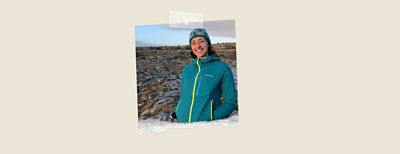Maybe you appreciate hyper-local food. Maybe you love the idea of foraging for your own wild-grown ingredients. Or maybe you’re simply the type of person who notices mushrooms poking up from the forest floor, takes a closer look, and wonders, Hmm, could I eat that? Whatever your reason, mushroom foraging is a great way to turn hiking into a culinary adventure. Because yes, in many cases, you can eat the delectable fungus species you find. Not only that, but foraging gets you outdoors, connects you more closely to the Earth and what you eat—and it’s incredibly fun, too.
Of course, mushroom foraging takes know-how. Fungi can be hallucinogenic, vomit-inducing, or deadly, so learning the difference between, say, Morchella esculenta (the morel; delicious fried in butter) and Amanita virosa (the destroying angel; will kill you) is crucial. But that’s not the only skill that will help make your foraging excursions successful. We tapped mushroom forager Maria Pinto, 37, for her top five tips on mushroom hunting for beginners. When she’s not working as a creative writing teacher, Pinto leads private foraging trips in the Boston area.
“It’s one of the best reality checks you can have, to get out and see what the land is doing,” Pinto says. And the mushrooms themselves captivate her, too. “Often folks don’t realize that a mushroom can taste like maple syrup. It can taste like citrus. A truffle has all of these volatile organic compounds that drive you crazy and make you obsessed. These organisms have an incredible range of chemical reactions. They’re so fascinating, and so little is known about them. I find that so incredible and inspiring.”
Pinto is a fungi fan in general, but she’s developed a few favorites. Top of her list is the black trumpet. “They’re so fragrant and weird and beautiful to look at,” she says. “You’ll be walking and not see any, then you’ll see one and get close to the ground and realize you’ve been trampling on hundreds. And they fry so well.” She also loves the matsutake, which mycologist David Arora described as smelling like gym socks and Red Hots. “Somehow that’s fantastic,” she says. “Those are great in a Japanese-style miso soup. Roasting them is a great idea.”
Inspired to find your own favorites? Read this first.
Study Up
First step: Get your hands on a regional mushroom guide, Pinto says. “Get to know which are the deadly and supertoxic species in your area really well, and give those a wide berth,” she adds. The guide will also clue you into when particular species are in season near you and help you figure out where to look.




